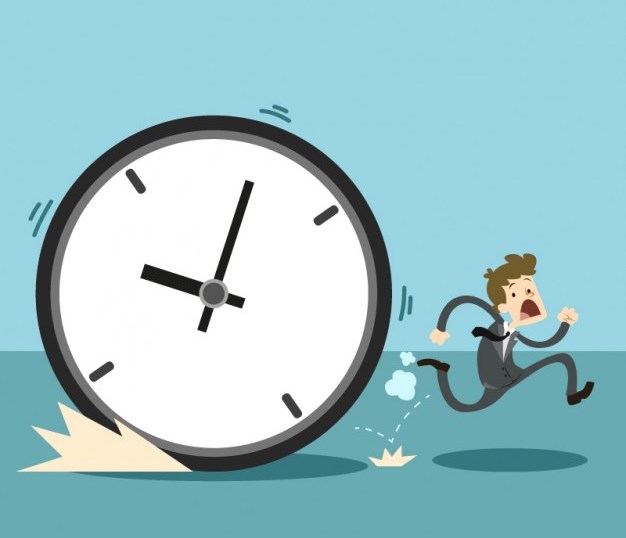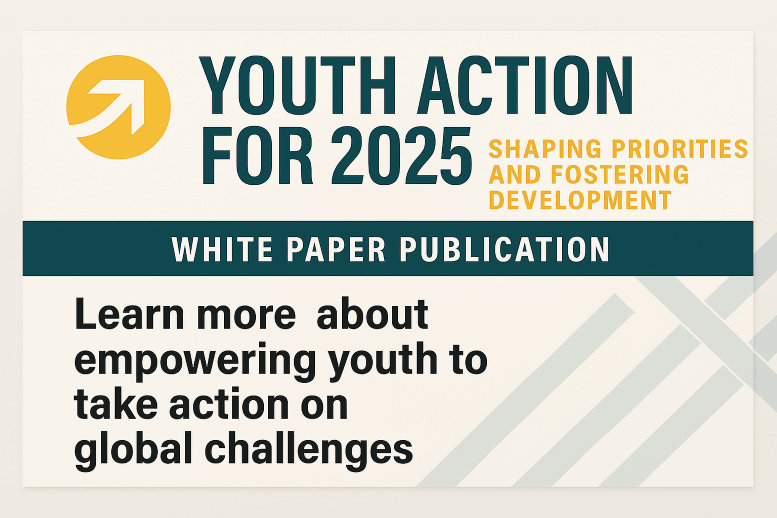Faced with intense market pressures, corporations often take on more than they can handle: They increase the number and speed of their activities, raise performance goals, shorten innovation cycles, and introduce new management technologies or organizational systems. For a while, they succeed brilliantly, but too often the CEO tries to make this furious pace the new normal. What began as an exceptional burst of achievement becomes chronic overloading, with dire consequences. Not only does the frenetic pace sap employee motivation, but the company’s focus is scattered in various directions, which can confuse customers and threaten the brand.
Realizing something is amiss, leaders frequently try to fight the symptoms instead of the cause. Interpreting employees’ lack of motivation as laziness or unjustified protest, for example, they increase the pressure, only making matters worse. Exhaustion and resignation begin to blanket the company, and the best employees defect.
We call this phenomenon the acceleration trap. It harms the company on many levels—over-accelerated firms fare worse than their peers on performance, efficiency, employee productivity, and retention, among other measures, our research shows. The problem is pervasive, especially in the current environment of 24/7 accessibility and cost cutting. Half of 92 companies we investigated in 2009 were affected by the trap in one way or another—and most were unaware of the fact.
That’s the bad news. The good news is, it’s possible to escape the acceleration trap. Companies can sustain high performance over the long term without overtaxing their employees or confusing their customers. In this article, we’ll show leaders how to recognize the acceleration problem, start to move their companies in a different direction, and make cultural changes that will prevent future entrapment.
Being Trapped
We have studied more than 600 companies over the past nine years as we tried to understand acceleration. Our data provide a sobering look at conditions inside a company that is accelerating too much. At companies we define as fully trapped, 60% of surveyed employees agreed or strongly agreed that they lacked sufficient resources to get their work done; compare that with 2% at companies that weren’t trapped. The findings were similar for the statements “I work under constantly elevated time pressure” (80% versus 4%) and “My company’s priorities frequently change” (75% versus 1%). Most respondents at fully trapped companies disagreed or strongly disagreed that they saw a light at the end of the tunnel of intense working periods (83% versus 3% in nontrapped companies) and that they regularly got a chance to regenerate (86% versus 6%).
The Habit of Constant Change
Over-accelerated companies exhibit at least one of three patterns of destructive activity. The first is, simply, that employees are overloaded with too many activities. They don’t have the time or the resources required to do their jobs. Some 35% of firms in our sample overloaded their employees. Bombardier Transportation, the Berlin-based global market leader for rail transportation technology, is one example. It had experienced success and enormous growth, but in the past few years, it was operating in a continual state of overload. To keep up with competitive pressures, it took measures to optimize efficiency and enlarge capacity. But as the value of its contracts more than doubled, its number of engineers grew only slightly. The company has since addressed the overload problem, but at the time, employee burnout was a serious threat.
The second pattern is what we call multiloading: Companies ask employees to do too many kinds of activities. This leaves employees and the company as a whole unfocused, and activities are misaligned. Some 35% of firms in our sample suffered from multiloading.
Finally, companies get into the habit of constant change, or perpetual loading. This pattern deprives workers of any hope of retreat for recharging their energy. To compensate, they hold back their efforts whenever they can, even if doing so hampers the company. Some 30% of firms in our sample were affected by perpetual loading. These companies, which persistently operate close to capacity limits, tend to be the hardest on employees. Just about anyone can tolerate overloading or multiloading for a while, especially if there’s an end in sight, but when leaders neglect to call a halt to periods of furious activity, employees feel imprisoned by the debilitating frenzy.
At Lufthansa, for example, employees experienced a decade of relentless change and cost cutting measures. In 2004, Holger Hätty, then a member of the executive board of Lufthansa Passenger Transportation, told us that employees were worn down by being told over and over again to economize. “Our people respond by asking, ‘When is the economizing going to come to an end?’ They are exhausted, and every time they slow down to catch their breath, there we are at their heels, telling them: ‘Economize!’” Lufthansa successfully extricated itself from the trap, as we describe below.
How to Break Free
If your company is caught in the acceleration trap, you have several ways to break free: Halt less-important work, be clear about strategy, create a system for winnowing projects, and declare an end to the current high-energy phase.
Stop the action.
Instead of asking employees to suggest new initiatives to improve the company, why not turn the question around? Ask employees for ideas about what to terminate. Employees often respond with a slew of good suggestions. At one company we studied, they came up with some 540 ideas, three times the annual number of new-project ideas they had been suggesting. The company ended up halting 40% of its projects. Regularly ask yourself, your managers, and the whole company: “Which of our current activities would we start now if they weren’t already under way?” Then eliminate all the others.
Be clear about strategy.
Asking “What should we stop doing?” and then terminating nonessential tasks requires CEO fortitude. Projects that need to be killed may have highly placed sponsors, so the CEO must be prepared to step on some toes. Ultimately, the choice to keep or cut loose hinges on whether an activity directly supports the company’s strategy—so that strategy must be clearly understood throughout the entire firm.
Decide how to make decisions.
Not every project that supports the company’s strategy is of major importance. So companies need a systematic way to make hard choices. When the Otto Group, a leading international trading and services corporation with 53,000 employees, restructured, managers found themselves burdened with 20% to 30% more work. So in 2007, the company initiated a stop-action review. Each executive was asked to select a single project that he or she wanted to complete by all means. But that still left too many in play, according to Thomas Grünes, then head of central services, so the list was then halved based on each project’s required investment, value-to-cost ratio, and, in certain cases, symbolic value for employees. For example, the final list included a redesign of reception areas and staff restaurants, which increased pride and performance “and thus was a very important initiative, although the economic value was not obvious,” Grünes says. To guard against bloat, the company has made that process an annual activity.
Don’t Get Trapped Again
Just as important as breaking free is preventing future entrapment. To do that, executives can institute stop-action initiatives, reduce the number of goals the company sets, and mandate that project-management systems carefully filter out the mediocre ideas. Some companies ease the sting of project-killing by creating a “burying” culture.
Institute spring cleaning.
A period devoted to a good sweeping gets managers into the habit of culling initiatives. Of course, it needn’t happen in the spring—or, indeed, on a strictly annual basis. Some companies establish a schedule of housecleaning; others simply decide that they will clean whenever tasks and activities seem overwhelming or before starting a new change process.
Cap annual goals.
Placing a cap on the number of goals set each year is crucial to preventing an explosion of activities. “Managers are no longer allowed to set 10 top-priority goals,” Hans Schulz declared when he was CEO of Balzers, a Liechtenstein-based industrial company. Schulz permitted each to name just three “must-win battles,” because he believes that the point of goal setting isn’t to pile up projects but “to give people an orientation and to focus their action, attention, and energy.” After this rule went into effect, significantly more goals were achieved, Schulz says. To help make goal-reduction stick, a visible commitment from the CEO is necessary—especially in companies used to following a management-by-objectives approach. Leaders must help managers understand the purpose and value of refocusing on just a few goals and assist them in applying the new rules.
Filter new projects.
At too many firms, the CEO implicitly or explicitly encourages the people running project management systems to get caught up in new-project euphoria and to be liberal with go-aheads. Instead, CEOs should require that project management systems be used as much to filter and prioritize as to manage projects. At the beginning of a project cycle, project managers should ask: Do we have the resources for this project? Who will lead and own it? What other project will we abandon to make room for this one?
Introduce a “burying” culture.
Terminating a project can cause serious pain not only to its sponsors but also to the lower-level people who have been toiling on it. In a company that values commitment and reliability, managers and employees are likely to feel ashamed at being told to stop working on something they’ve put their hearts and souls into. One solution is to foster a culture that encourages managers or project heads to halt lesser projects. We’ve seen, for instance, companies hold a metaphorical burial for a project so that everyone involved in it could grieve and let go. During such a ceremony, managers should thank employees for their dedication and emphasize the project’s good points. A burying culture is particularly important for highly innovative companies that start many projects to see which will thrive.

Changing a Culture of Acceleration
Preventing the growth of new activities is only one aspect of avoiding the acceleration trap. Making changes in the company’s hurry-up culture is another crucial component.
Focus on one thing only for a limited time.
Companies can put on blinders for a specified time period to pursue strategically important projects without distractions. Lidl, an international chain of discounters, called for a companywide new project ban between May and September 2009 as it focused on opening 29 supermarkets in Switzerland. “We would never have been able to manage this enormous show of strength without this project ban,” Andreas Pohl, CEO of Lidl Switzerland, told us. Ideas for future projects were collected, but everyone understood that the list would not be discussed before September.
Institute time-outs.
In 2004, after a period of deep organizational change, Microsoft announced it wouldn’t introduce any more changes for a full year. The break “helped employees recover from the immense efforts of our restructuring,” says Ulrich Holtz, general manager for HR at Microsoft International. It’s a tactic we see too rarely. In our study of 92 German companies, we found that in the 46 caught in the acceleration trap, 86% of employees complained that their firms didn’t provide adequate time for reflection and regeneration after stressful phases. Perhaps that’s because leaders tend to view time-outs—of any length—as disruptions. We disagree. Time-outs are periods that allow for creativity and exploration. They prepare workers mentally and emotionally for the next phase of high performance, thereby increasing the company’s productivity. Specify the length of planned time-outs. For example, declare a six-month moratorium on new initiatives or a yearlong respite from organizational change.
Slow down to speed up.
If time-outs represent too radical a change, companies can systematically insert periods of calm, regeneration, and incremental change amid high-energy phases. Deliberately alternating episodes of high energy and regeneration has helped Switzerland-based Sonova Group, the world market leader in hearing aids, achieve extraordinary innovation and a growth rate in 2008–2009 of about 8%, which was substantially higher than its competitors’. Ever since 2002, the company has committed to launching two product generations per year. The entire company goes into overdrive to make sure these events, in April and November, go off without a hitch, but after each successful launch there is a lull in activity, allowing the teams to recharge.
Model better behavior.
Executives should serve as role models for effectively renewing energy and commitment. Bill Gates used to retreat to a cottage for a “think week” every spring and fall, taking with him ideas submitted by Microsoft employees. Doing so allowed him to focus exclusively on a crucial business task—the selection of new directions in product development—and saved him from being constantly bombarded with new ideas. When he returned to day-to-day business he felt refreshed, even though he had worked intensely during his week away. Today, dozens of Microsoft’s big thinkers follow that pattern, and the think week has become a Microsoft institution.
Use feedback systems.
Feedback can help change a culture of acceleration. Serview, a highly productive 30-person German IT consulting firm with 25% average annual growth over the past four years, asks employees to watch out for colleagues who may be working too hard. Workers receive monthly feedback from managers about (among other things) whether they are taking adequate measures to rest and recharge. Workers also fill out a monthly self-assessment on the same issues. The feedback system caused a pronounced behavioral change. Employees look for symptoms of excessive labor and over-acceleration in themselves and their colleagues, and they strive to develop solutions as problems arise.
Ideally, a company is powered by what we call sustaining energy—a joyful urgency among employees that never burns out. Many CEOs catch glimpses of this ideal, especially in energy-intense phases such as high-speed growth and innovation or in crisis situations, when the entire workforce is highly motivated to achieve critical goals. But if the leader gets greedy, demanding the same level of urgency every day, the energy will fizzle and performance will sink, despite employees’ heroics. So here’s the best advice we can give CEOs: Don’t drive your company constantly to its limits. Relentless acceleration leads to loss of focus, an uncontrolled flood of activities, organizational fatigue, and burnout. Be aware of the exertion that underlies every burst of effort, and work toward making sure the firm’s energy level is sustainable. This means being vigilant, even when things are going smoothly, for signs that the company is slipping into the acceleration trap.
—




